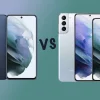Introduction In recent years, animation has grown and changed in exciting ways. New tools like digital software, artificial intelligence (AI), and virtual reality (VR) are making big impacts. These advancements are speeding up how animation is created and improving how we watch and enjoy it. Looking ahead, new trends in animation are set to shape
Introduction
In recent years, animation has grown and changed in exciting ways. New tools like digital software, artificial intelligence (AI), and virtual reality (VR) are making big impacts. These advancements are speeding up how animation is created and improving how we watch and enjoy it. Looking ahead, new trends in animation are set to shape the future. They are making the creative process easier and helping audiences connect with animated content in fresh, exciting ways.
The Role of Animation Technology in Storytelling

Image by: Yandex.com
Animation technology is a big part of storytelling today. It helps creators share stories in ways traditional methods can’t. For example, animation makes it possible to create imaginary worlds, super-powered characters, and amazing visual effects that add to the story.
It also lets animators show emotions and details that live-action films might miss. With tools like facial recognition and motion capture, characters’ expressions and movements look very real. This helps audiences feel more connected to the characters.
Top Animation Technology Trends and Innovations
1. The Rise of AI in Animation

Image by: Yandex.com
Artificial Intelligence (AI) is changing how animation is made. AI tools handle tasks like character rigging, lip-syncing, and scene setup, saving time for animators to focus on creativity. This makes animation faster and more efficient.
AI also improves animation quality by analyzing data to create smoother movements and transitions. It can even predict what audiences might like, helping create content that feels more personal and tailored to viewers.
Key Benefits of AI in Animation:
- Faster Production: AI speeds up repetitive tasks.
- Personalization: It helps make animations fit audience preferences.
- Improved Realism: AI creates more lifelike characters and movements.
2. Virtual Reality (VR) and Augmented Reality (AR) Integration

Image by: Yandex.com
Virtual Reality (VR) and Augmented Reality (AR) are changing animation, especially in gaming, entertainment, and storytelling. VR lets users enter animated worlds and interact with characters in real time, offering a fully immersive experience.
AR adds animated elements to the real world, using devices like smartphones or AR glasses. This technology is blurring the lines between reality and animation, creating new, interactive experiences.
Impact of VR and AR on Animation:
- Immersive Experiences: VR lets users explore animated worlds.
- Enhanced Interactivity: AR enables real-time interaction with animated elements in the real world.
- Revolutionizing Storytelling: These technologies make stories more engaging and personal.
3. 3D Animation and Real-Time Rendering

Image by: Yandex.com
The move from traditional 2D to 3D animation has opened up new ways to tell stories. Real-time rendering technology is changing how animated movies and games are made. It lets animators see their work as it’s being created, speeding up the process.
With powerful graphics engines like Unreal Engine and Unity, real-time rendering allows animators to create high-quality 3D content quickly. This is especially important in gaming, where lifelike characters and environments are created using this technology.
Benefits of 3D Animation and Real-Time Rendering:
- Faster Production: It speeds up the animation process.
- Higher Quality: Creates more detailed and realistic 3D models.
- Realistic Interactions: Makes animations feel more lifelike and dynamic for viewers.
4. Motion Capture Technology

Image by: Yandex.com
Motion capture (MoCap) has revolutionized animation. It records human movements and transfers them to animated characters. While MoCap started in movies, it’s now widely used in animated films and video games.
With better MoCap technology, animators can capture even small facial expressions and body movements, making digital characters feel more lifelike and emotional. This has helped create characters that are more relatable and human-like.
Key Advantages of Motion Capture:
- Realistic Animations: MoCap makes animated characters more authentic.
- Efficiency: It speeds up the animation process by recording human movement in real-time.
- Enhanced Detail: MoCap captures small facial expressions and gestures.
5. Cloud-Based Animation and Collaborative Tools

Image by: Yandex.com
As animation teams work across different locations, cloud-based platforms are making it easier for animators, directors, and other creative professionals to collaborate. These cloud tools let team members work together in real-time, share assets, and update projects without delays.
Cloud-based platforms are also helping smaller studios and independent creators work with talent from around the world. They improve workflows by organizing files and reducing the need for physical storage.
Advantages of Cloud-Based Animation:
- Global Collaboration: Teams can work together in real-time, no matter where they are.
- Cost-Effective: Reduces the need for expensive hardware and physical storage.
- Streamlined Workflow: Makes project management and file sharing easier.
6. Interactive and Adaptive Animation

Image by: Yandex.com
Interactive and adaptive animation is a growing trend where the animation changes based on what the user does. This is common in video games and apps, but it’s starting to appear in traditional animation too.
In interactive animation, the story and visuals change depending on the viewer’s choices, making the experience more personal and engaging. It allows storytellers to connect with their audiences in new ways, where viewers actively shape the narrative.
Impact of Interactive Animation:
- Personalized Content: Viewers can influence the story with their decisions.
- Increased Engagement: Users stay more involved when they control the storyline.
- Innovative Storytelling: Creates fresh creative opportunities for animators.
7. AI-Generated Animations and Deep Learning

Image by: Yandex.com
AI-generated animations are becoming popular as deep learning improves. By training AI with large datasets of animations, it can now create new animations that match the style, movements, and actions of existing content. This helps create animation sequences much faster, without needing manual keyframing.
AI can also design new characters and animations from scratch, based on user input or existing media. This opens up exciting possibilities for creating unique, high-quality content quickly.
Benefits of AI-Generated Animations:
- Faster Production: AI can make animations much faster than human animators.
- Creative Possibilities: AI can create new characters or animation styles.
- Cost-Effective: Reduces the need for manual work in the animation process.
Challenges in Animation Technology
Despite the many benefits, there are still some challenges in animation technology. One major challenge is the high cost of the latest software and hardware. While new technologies have made animation more efficient, they also require expensive tools that may be out of reach for smaller studios or independent animators.
Another challenge is the complexity of learning new animation tools. As technology advances, animators need to keep up with new software and techniques, which can be overwhelming. Training and development are essential but can be time-consuming and costly.
The Future of Animation Technology

Image by: Yandex.com
The future of animation technology looks bright, with even more exciting developments on the horizon. AI and machine learning will continue to improve animation processes, making it easier and faster to create complex scenes and characters. Virtual reality (VR) and augmented reality (AR) are also expected to play a larger role, providing immersive experiences for viewers.
As technology becomes more accessible, we can expect animation to reach new heights in creativity and innovation. In the future, we may see even more interactive forms of storytelling, where viewers can shape the direction of the animation or even step into the world themselves through VR and AR technologies.
Analysis Table: Key Animation Technology Trends
| Technology Trend | Description | Key Benefits | Future Impact |
|---|---|---|---|
| AI in Animation | Automating animation tasks using AI tools. | Faster production, personalization, improved realism. | Enhances creative efficiency and personalization. |
| VR/AR Integration | Creating immersive worlds through VR and AR. | Interactive and immersive experiences. | Shifts traditional storytelling to interactive formats. |
| 3D Animation & Real-Time Rendering | Speeding up the production of 3D animated content. | Faster production, realistic interactions, high-quality visuals. | Increases production efficiency and visual appeal. |
| Motion Capture Technology | Capturing human movements for animation. | Realistic animations, efficient production. | Increases character believability and animation quality. |
| Cloud-Based Animation Tools | Cloud platforms for remote collaboration. | Global collaboration, cost-effective, streamlined workflow. | Enables wider access to animation tools and team collaboration. |
| Interactive & Adaptive Animation | Animation that changes based on user input. | Personalized content, higher engagement. | Creates new ways to engage audiences through interactive experiences. |
| AI-Generated Animations | AI creating animations without human intervention. | Faster production, creative possibilities, cost-effective. | Allows for rapid content generation and innovation. |
Comparative Table: Traditional vs. Emerging Animation Technologies
| Aspect | Traditional Animation | Emerging Animation Technology |
|---|---|---|
| Production Time | Time-consuming, manual process. | Faster production with AI and real-time rendering. |
| Interactivity | Passive viewing experience. | Interactive content where viewers shape the story. |
| Animation Style | Limited by manual techniques. | AI-generated styles and personalized experiences. |
| Cost | Expensive due to extensive manual labor. | More cost-effective with cloud-based tools and automation. |
| Collaboration | Localized teams and physical meetings. | Global teams working in real-time through cloud platforms. |
| Realism | Limited realism due to manual limitations. | Highly realistic animations using AI, MoCap, and VR. |
Conclusion: Animation Technology Trends to Watch
The animation industry is on the brink of a major transformation, driven by groundbreaking technologies like AI, VR, and real-time rendering. These trends are not only enhancing the quality of animation but are also enabling more immersive, interactive, and personalized experiences for audiences. As these innovations continue to evolve, the future of animation will be marked by faster production, more creative possibilities, and a deeper connection between the content and its viewers. By embracing these advancements, animators and studios will be well-equipped to push the boundaries of storytelling and captivate audiences worldwide.
















